Death Valley National Park: the complete guide
Death Valley: I could think of a more enticing name for a national park…
One could mistakenly believe that it is only a simple desert without interest, not deserving of a place in a road trip to the American West. However, Death Valley is home to a great biodiversity and the contrasting landscapes are truly striking.
This complete guide contains all the information you need to plan your visit to Death Valley National Park.
Summary
- Map of Death Valley
- Presentation of Death Valley Park
- What is there to do in Death Valley National Park?
- Where to sleep in Death Valley National Park
- When to visit Death Valley
- Nearby
- Practical information
Map of Death Valley
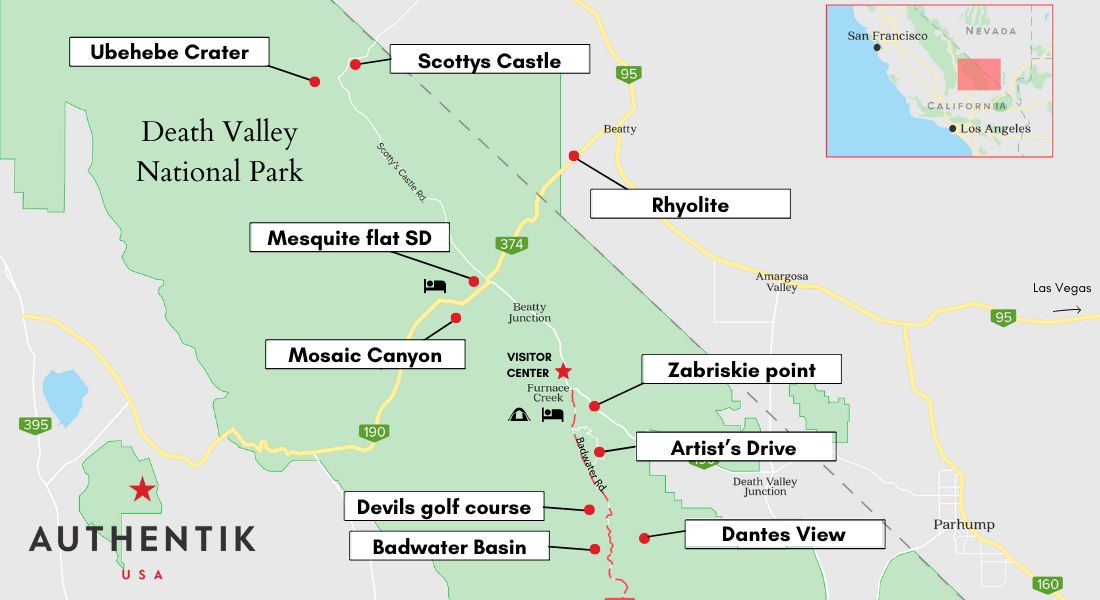
Presentation of Death Valley Park
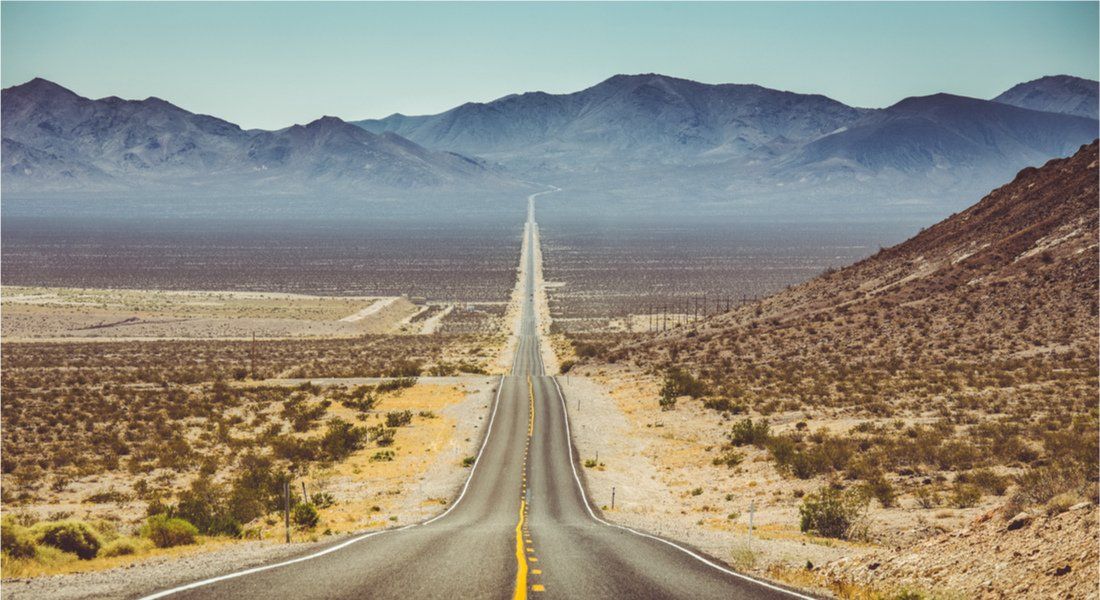
Death Valley National Park is in the Mojave Desert of California, about a 2-hour drive from Las Vegas.
Land of extremes, Death Valley is the driest and lowest park in North America, and the hottest in the world!
Composed of colourful badlands, snow-capped peaks, sand dunes and rugged canyons, it offers the opportunity to discover landscapes of great diversity and beauty.
Far from being the uninhabited land that one might imagine, the park is home to many animal species that survive despite the little rain that falls there each year (about 5 cm per year). However, they are quite difficult to observe since they are mostly inactive during the day. They come out at night, when it is cooler.
In summer, temperatures can rise above 40 degrees. It is therefore preferable to go hiking very early in the morning or late in the afternoon. The best idea would be to plan at least one night in the park in order to spend at least two half-days visiting the park.
For the record, Death Valley National Park was given its name by pioneers who got lost there during the winter of 1849-1850. It is believed that only one person lost his life here, but the other members of the group thought that they would not survive. After being rescued, one of the survivors is said to have looked back and said "Goodbye, Death Valley".
What is there to do in Death Valley National Park?
#1. Visitor Center
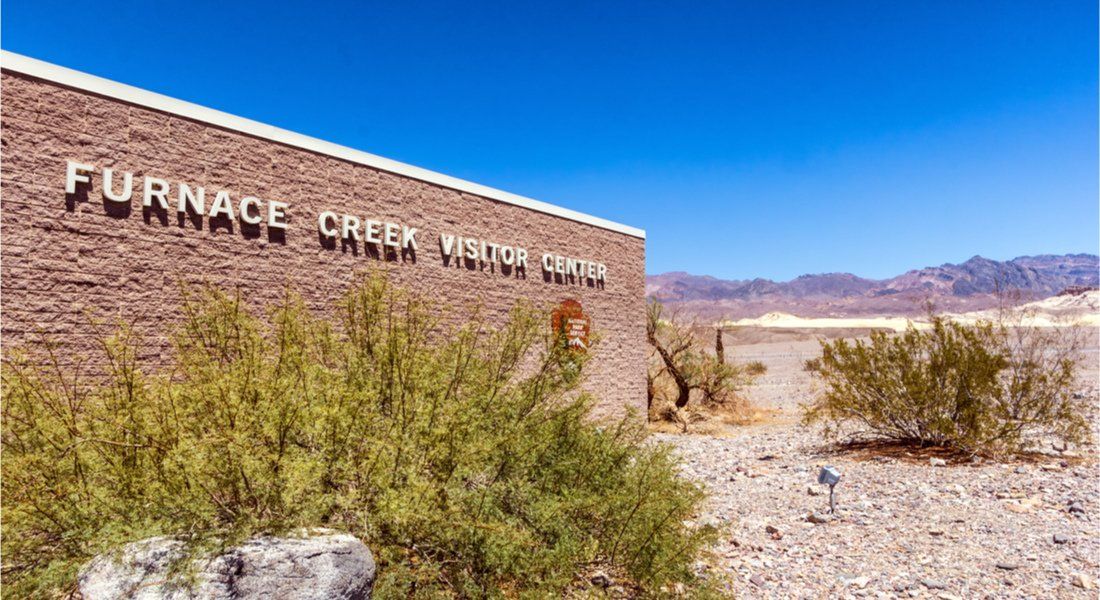
Whether you have an afternoon or several days to spend in Death Valley National Park, good planning is necessary to help make your visit safe and memorable.
A visit to the Furnace Creek Visitor Center is therefore a must.
Open daily from 8:00 a.m. to 5:00 p.m., it's the best place to find out about must-see attractions, check out exhibits, and watch a 20-minute film about the park.
#2. Zabriskie Point
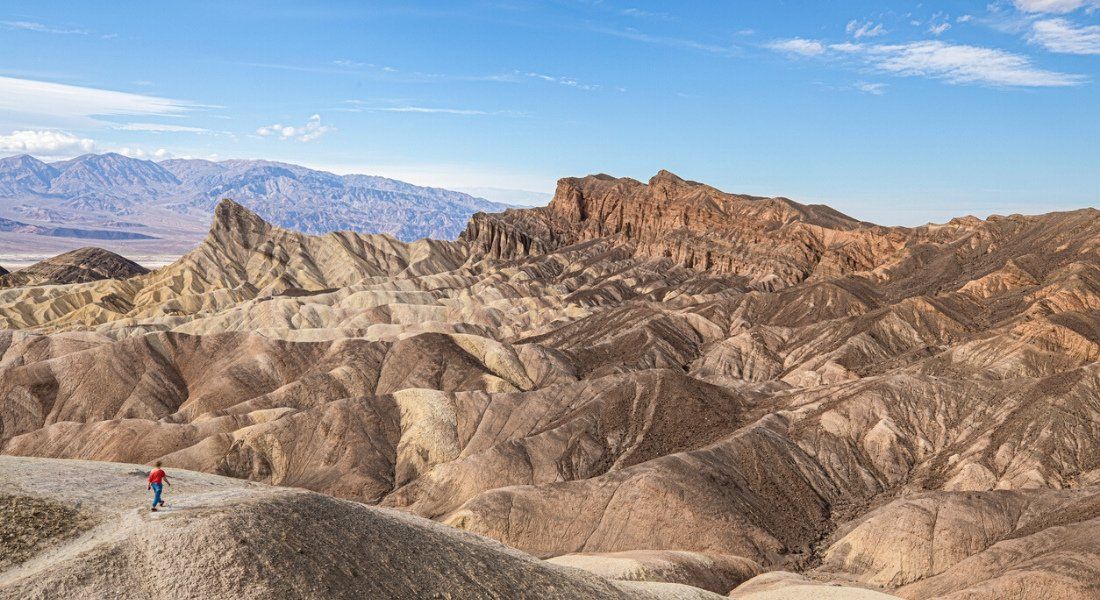
Located just east of Furnace Creek on Hwy 190, Zabriskie Point offers a stunning view of the Golden Canyon Cliffs. Access is very easy as a short walk will take you to the lookout.
It is a great spot to take pictures at sunset (or at sunrise for the brave).
#3. Dantes View
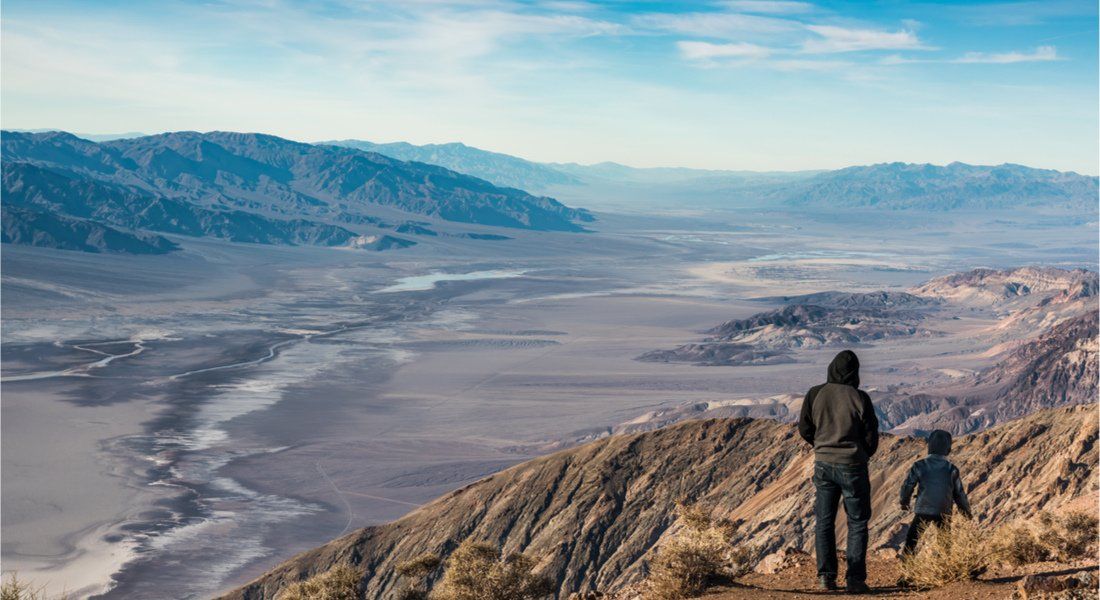
Dentes view can be reached by a paved but winding road that is off limits to all vehicles over 25 feet in length.
Soaring 1,699 metres above the valley floor along the crest of the Black Mountains, this scenic overlook offers panoramic views of the park from Badwater Basin to the Panamint Mountains.
#4. Artist’s Drive
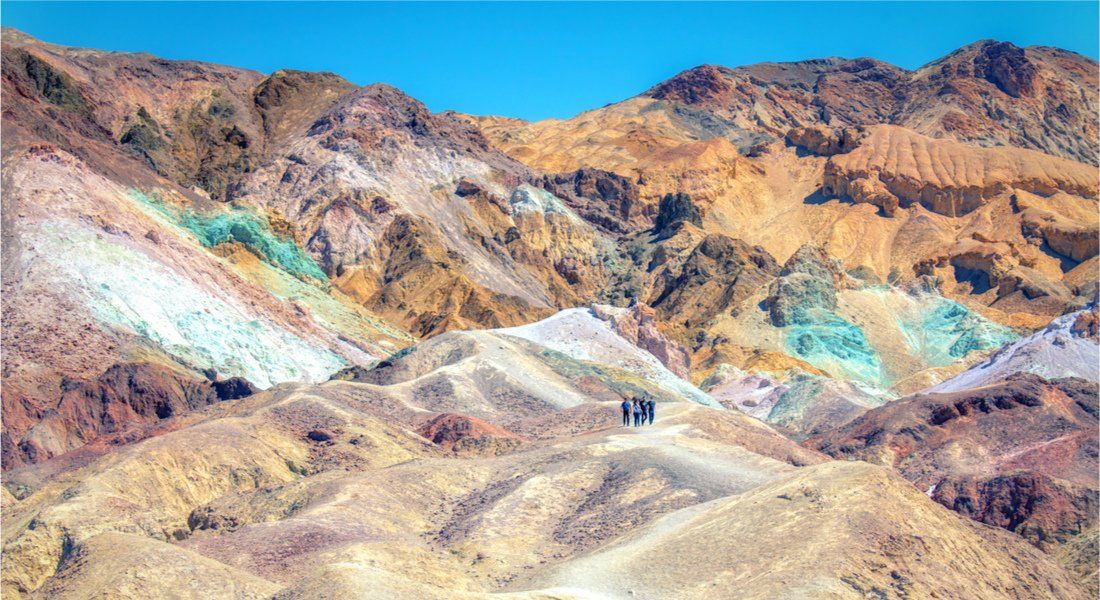
Artists Drive is a winding one-way looped road off Badwater Road, one of the most scenic routes in the American West.
It offers the enjoyable experience of winding through hills carved by the erosive power of water, but also Artists Palette, named for the array of colours splashed across the rocky surface. The rainbow effect is created by volcanic deposits rich in compounds such as iron oxides and chlorite.
Avoid visiting under the midday sun, as the colours will be less bright. Sunrise and sunset provide additional shadows and changing light, further enhancing the allure of this incredible place!
#5. Devils Golf Course
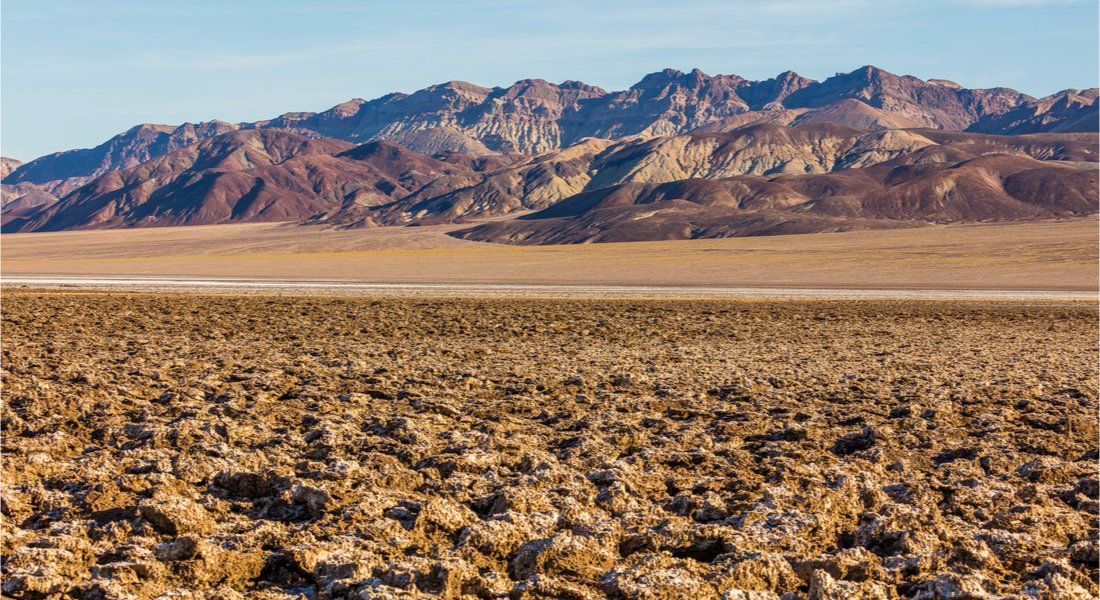
Also located along Badwater Road, Devils Golf Course is worth a look when visiting Death Valley.
It is a vast barren landscape of large salt formations created by the evaporation of a lake 2,000 years ago. The ground is so jagged that it is said that "only the devil could play golf on such a surface"!
If you have a keen ear, listen for the sound of tiny salt crystals bursting apart from the heat.
#6. Badwater Basin
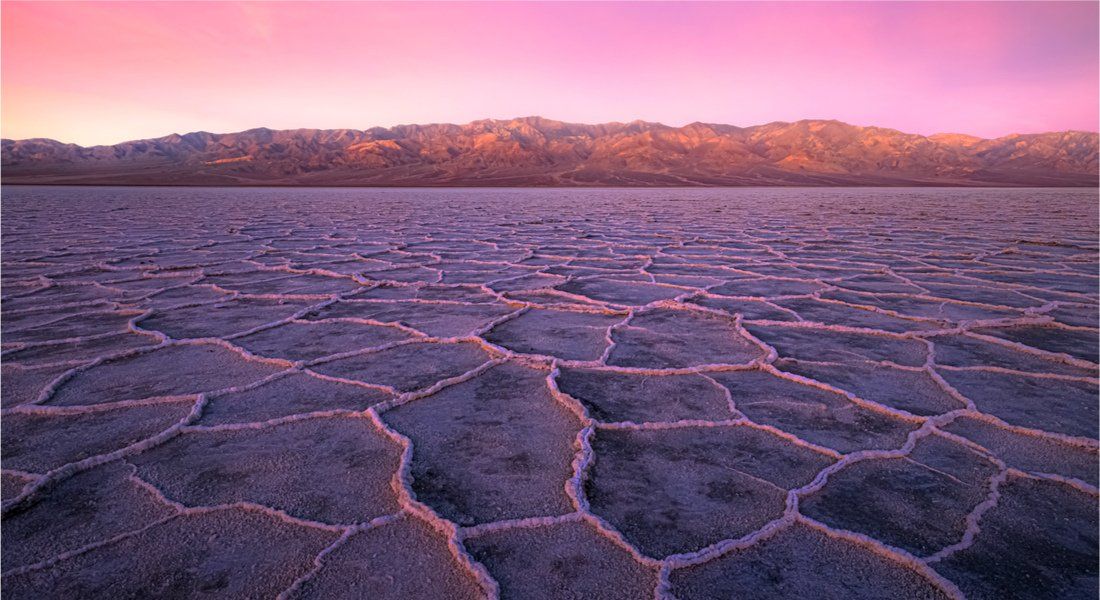
This is certainly one of the must unusual places you will see during your road trip through the American West.
Badwater Basin is 86 metres below sea level, making it the lowest point in North America. This vast surreal landscape of salt flats can turn into a temporary lake after heavy rains.
Badwater Basin is easily accessible from the parking lot, but the best views of the salt polygons require an easy round-trip hike of about 1.6 km.
Note that doing this hike after 10 a.m. is strongly discouraged in the summer because of the high heat.
#7. Mesquite Flat Sand Dunes
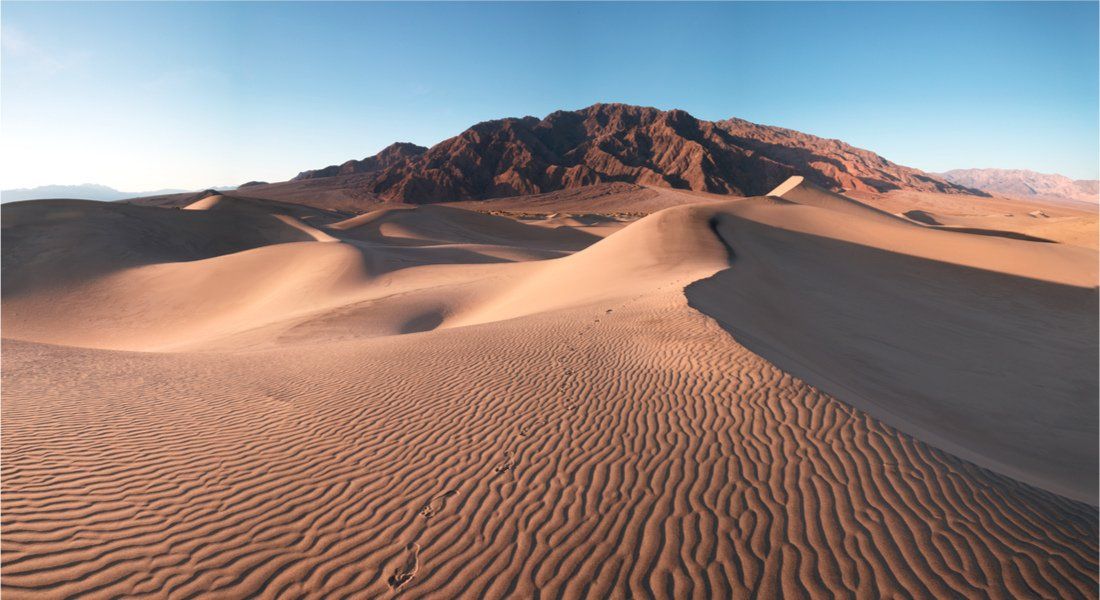
The sand dunes of Death Valley are named after the mesquite trees that are abundant in the area.
There is no official trail in the dunes, but if you want to reach the highest dune, count on a 1.5 hour walk there and back. To be avoided after 10 am in the middle of summer, also because of the extreme heat.
The advantage of going there very early in the morning is that the night winds have erased the footprints of the previous day, leaving the natural ripples on the dunes. It's simply magnificent!
#8. Mosaic Canyon
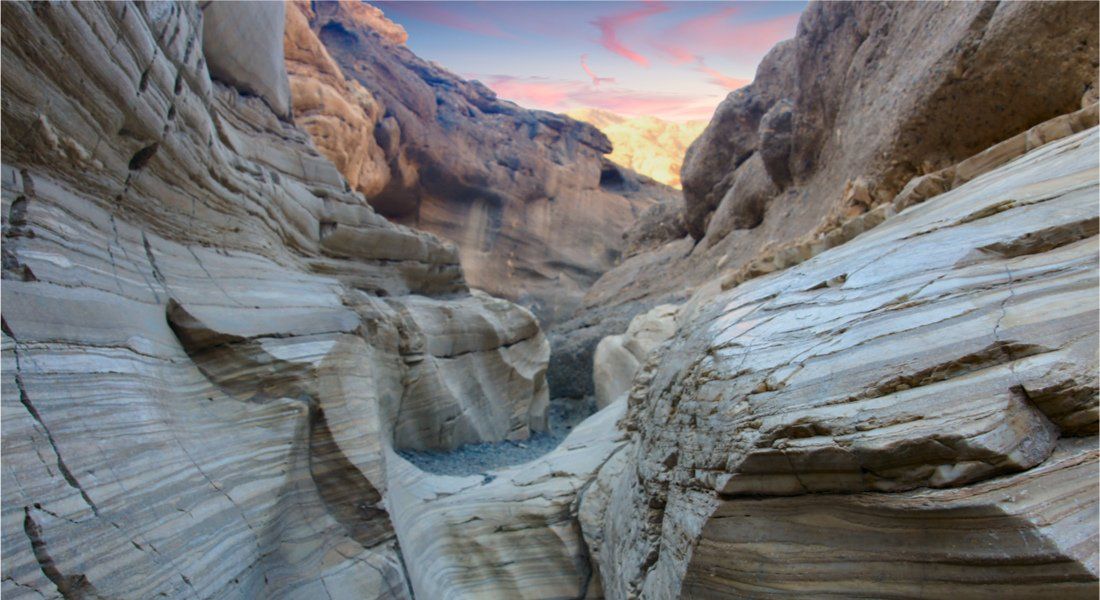
Located just across from Stovepipe Well village, Mosaic Canyon is another fine specimen of the geology of Death Valley National Park.
Far from being monotonous, this hike takes you through a narrow canyon and is composed of several landings where you'll have to crawl and clamber over rocks to reach the next passage.
Be on the lookout for the canyon's namesake formations, the Mosaic Canyon Breccia: on some rocks, small angular fragments trapped in natural cement form a lovely mosaic.
Time (round-trip): 2.5 to 3 hrs.
Distance (round-trip): 6.4 km
Elevation gain: 366 km
Difficulty: moderate to difficult
Be careful during the hike because there are several sections of smooth slippery surfaces.
#9. Ubehebe Crater
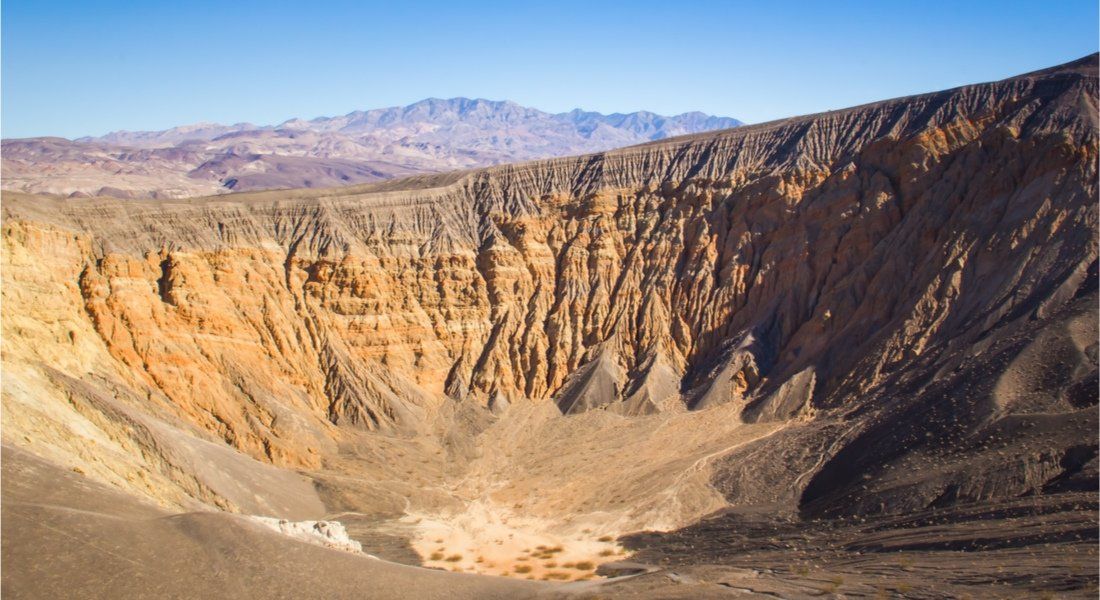
At an hour's drive from Furnace Creek, this immense crater is visible directly from the parking lot.
However, you can choose to hike the 2.4 km trail that runs alongside it to see this force of nature from all angles.
But you might want to skip it if you're afraid of heights...
#10. Scotty's Castle
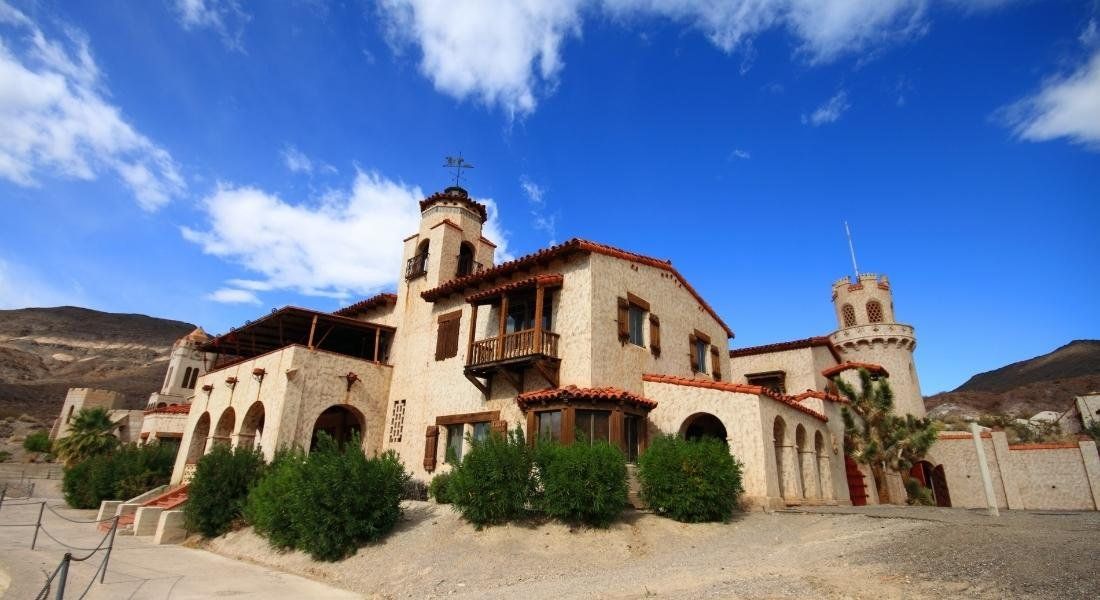
Scotty's Castle is a magnificent Spanish-style mansion in northern Death Valley.
Unfortunately, it is closed until further notice, following a flood and a fire.
However, it is possible to take a guided tour with a park ranger to learn more about the history of this unique place, the damage done, and the repairs that are underway.
Where to sleep in Death Valley National Park
Hotels
Stovepipe Wells Village
Conveniently located in the heart of Death Valley National Park, this hotel offers rooms with a stunning view of Mesquite Flat Sand Dune or the courtyard and pool. Open year round.
The Ranch at Death Valley
This former working ranch has been transformed into a hotel offering accommodation for visitors from around the world. You can choose a classic hotel room or a cottage.
The Inn at Death Valley
Like an oasis in the middle of the desert, the Inn at Death Valley is rated 4 Diamonds and offers a luxurious experience unlike any other. The hotel will be closed from June 1 to September 14, 2022.
Campgrounds
Furnace Creek Campground
Located in Furnace Creek near the Visitor Center, this is the only campground in the park that accepts reservations (from October 15 through April 15) and has sites with full hookups. The rest of the year, the campground operates on a first-come, first-served basis.
If you are planning a visit to Death Valley from October through April, you can make reservations 5 days to 6 months in advance by calling 877-444-6777 or by visiting the online reservation site.
There are several other campgrounds in the park. For a complete list, click here
When to visit Death Valley

Nearby
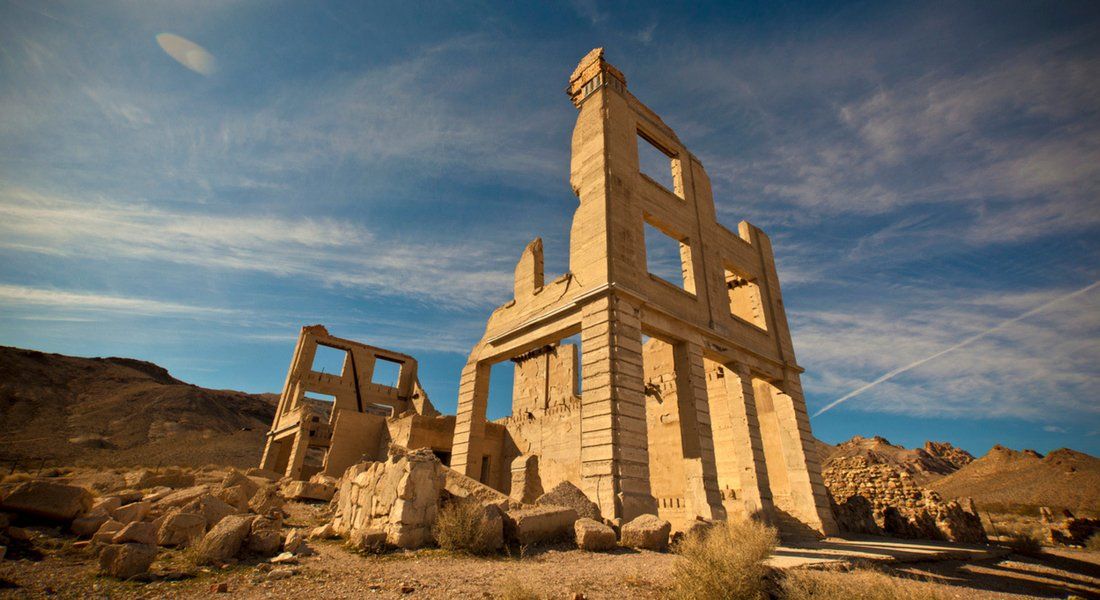
Rhyolite is a town located outside the Death Valley Park boundary, near the eastern entrance to the park, in the state of Nevada.
Created in 1904 during the gold rush, Rhyolite was abandoned 6 years later for economic reasons. It is now one of the top ghost towns to visit in the American West.
A few structures remain, such as some of the walls of the three-story bank, a part of the old prison, and the railway station, which is almost perfectly preserved.
A surprising place which is worth the detour.
Practical information
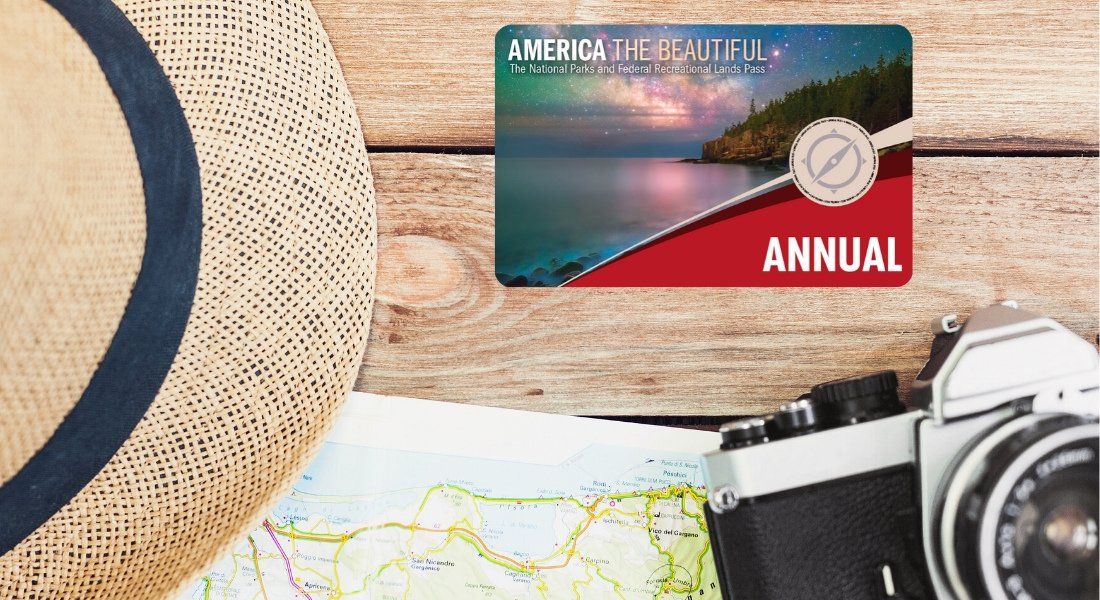
AUTHENTIK ADVICE
- Go to the Visitor Center when you arrive to get useful information for your visit and a map of the park.
- Bring high-protection sunscreen, a hat or cap, and your sunglasses.
- Drink at least 4 litres of water per day and never set out without enough drinking water for the whole family.
- Heat and dehydration: if you experience dizziness, nausea or a headache, get out of the sun, drink plenty of water, and dampen your clothes.
- There are gas stations at Furnace Creek Ranch, Stovepipe Wells Village and Panamint Springs Resort. Make sure you have plenty of gas in your tank, as distances are long inside the park.
- Never place your hands or feet where you can't see them. Animals like rattlesnakes, scorpions and spiders may be hidden there.
- Note that there is practically no cell service in Death Valley National Park.
PARK FEES
Entrance fees for Death Valley National Park:
- $30 per car or RV
- $25 per motorcycle
- $15 per pedestrian or cyclist
Entry is valid for 7 days.
If you plan to visit several national parks during your trip to the United States, I advise you to buy the America the Beautiful card. This annual pass costs $80 and is sold at all Visitor Centers. Buy it at your first park if you plan to visit at least 3 national parks.
There you go: now you know all the must-sees of Death Valley National Park. I hope that if you were hesitating about visiting it during your next US road trip, I managed to convince you .
If you'd like to share your experience in the park or have other suggestions, don't hesitate to write in the comments section below.











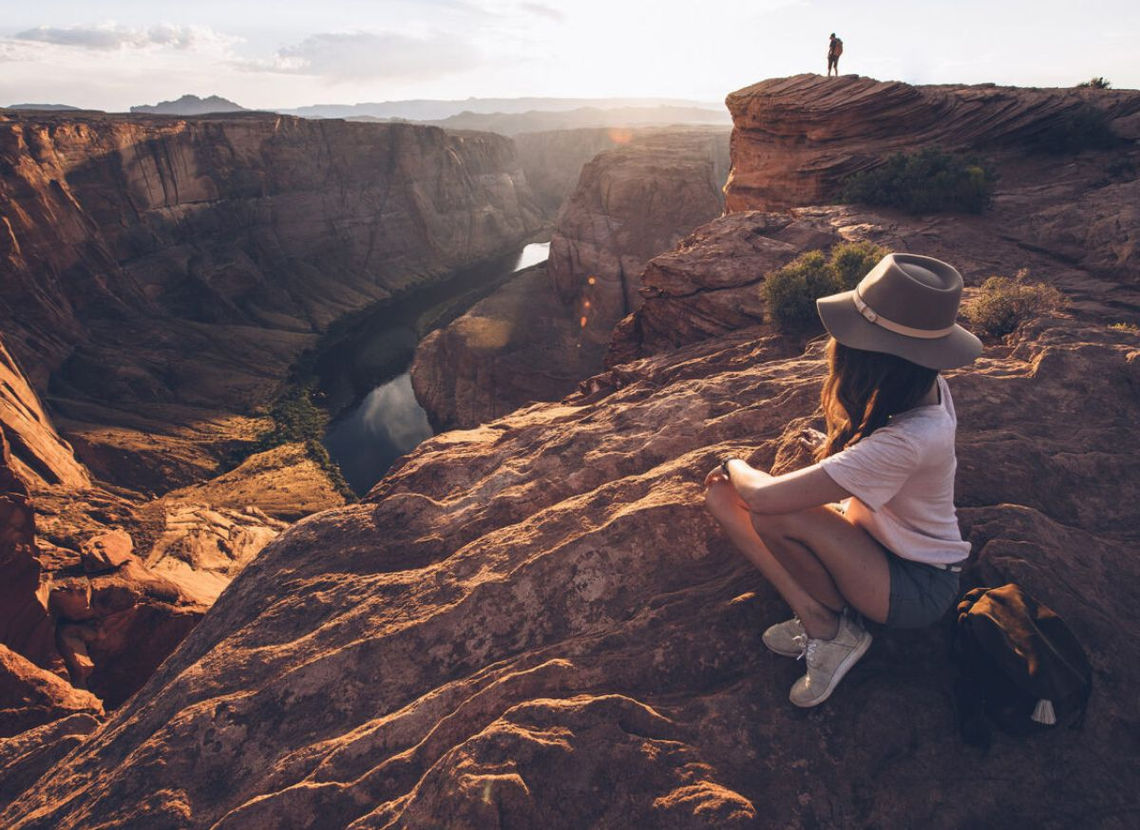
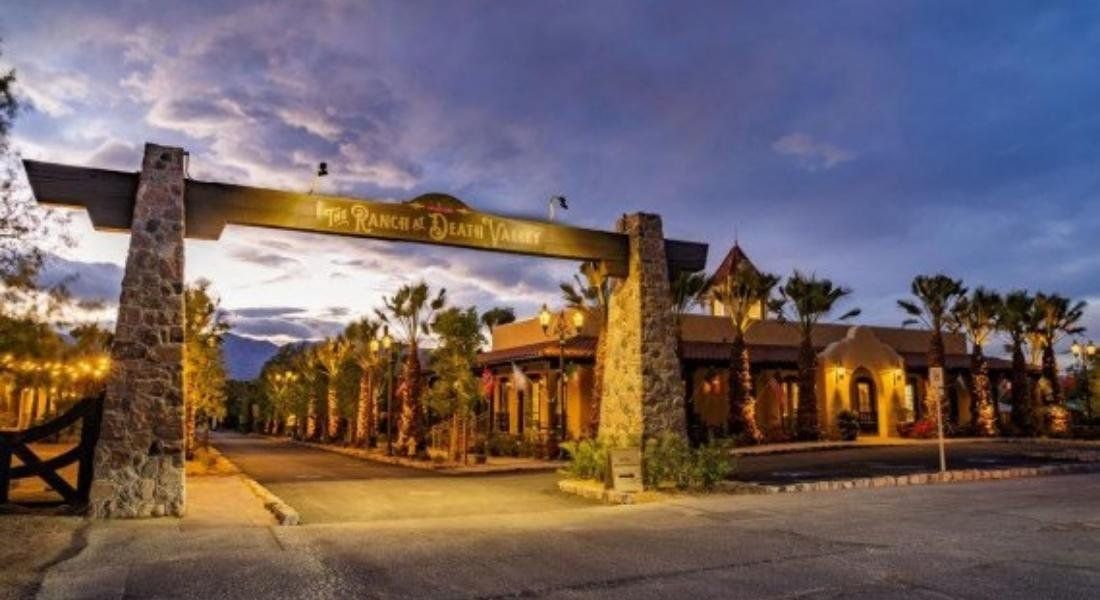
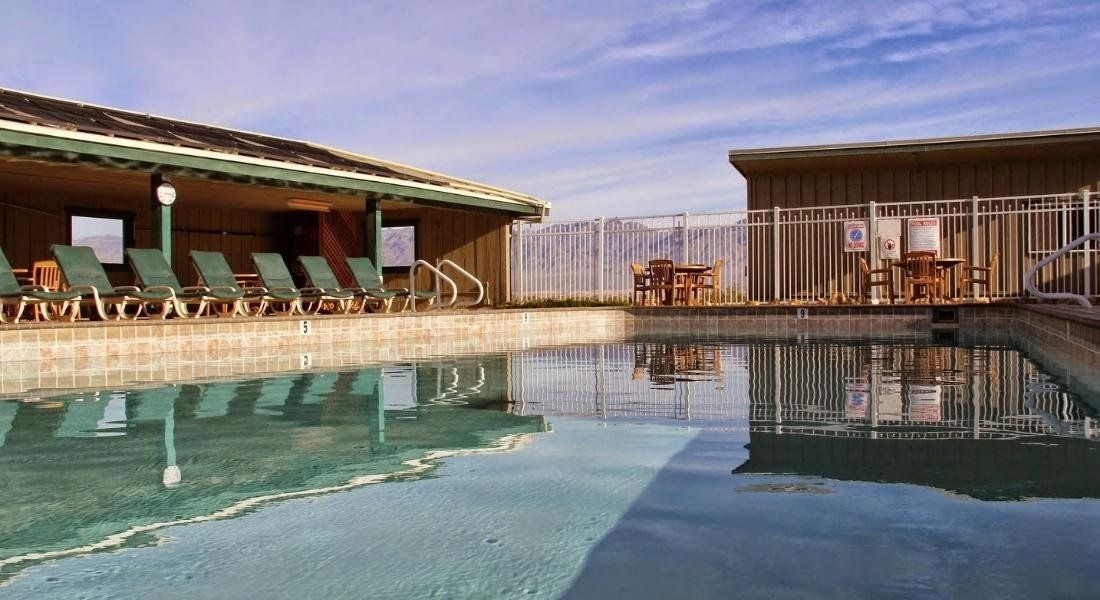

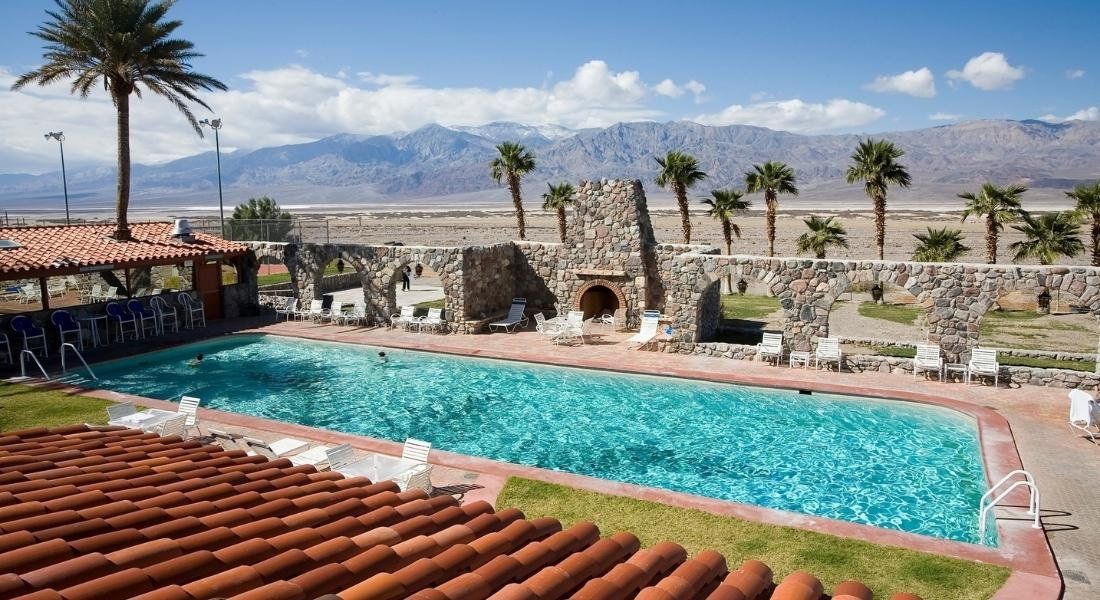




















LEAVE A COMMENT
Répondre à: -
delete my replyYour e-mail address will not be shared
6 comments